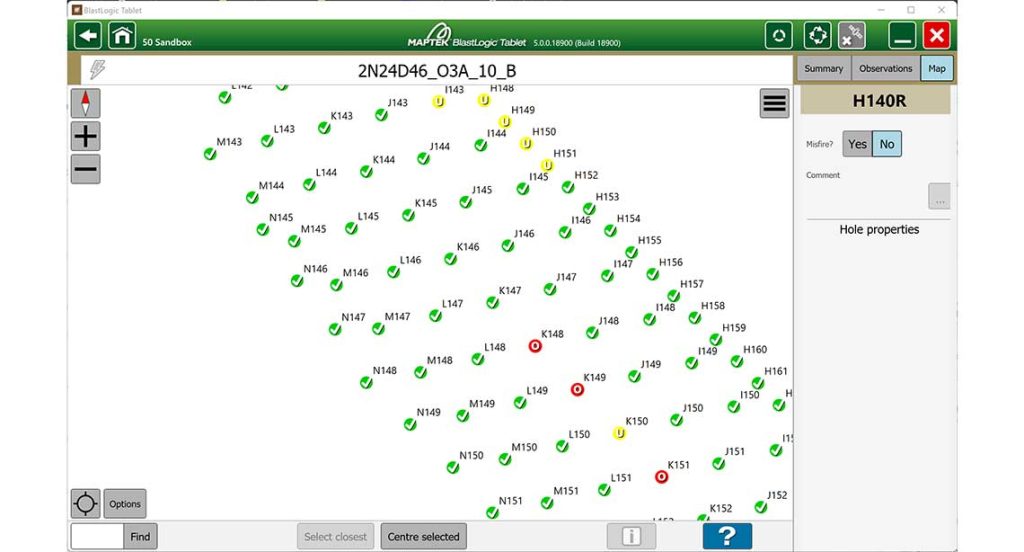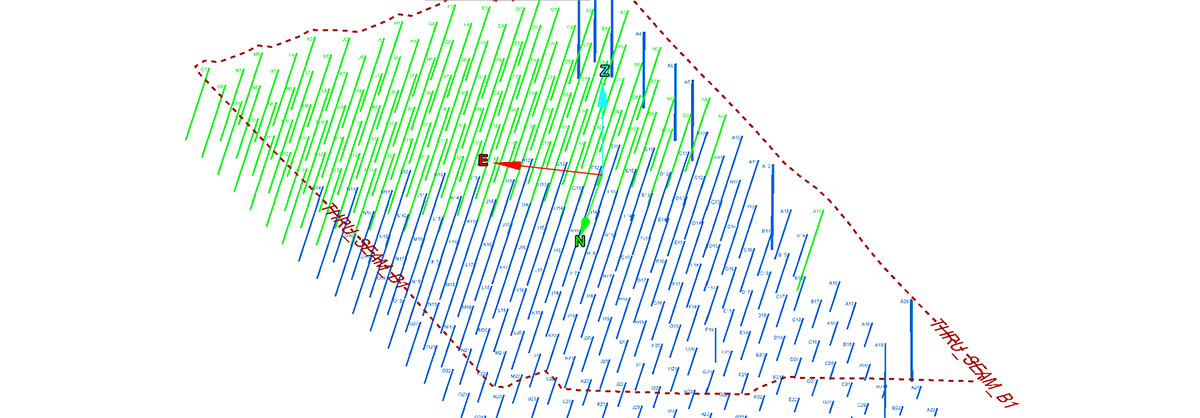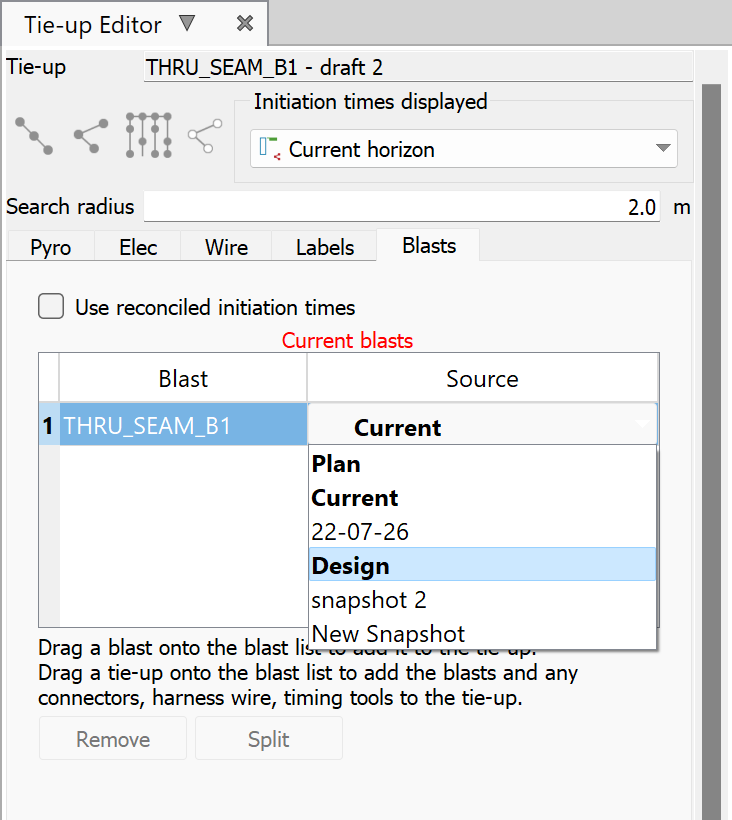September 2022 Issue Index
Future-proofing drill and blast
The advent of Maptek BlastLogic has given engineers the ability to anticipate and effectively plan for possible scenarios as part of their design process.
The wide adoption of Maptek BlastLogic drill and blast design and reconciliation solution over the last decade, means that on-bench activities relevant to drill and blast engineering plans are now largely digital.
Crews often need to make decisions on the fly, and want to avoid downtime due to unforeseen situations. Because conditions on the ground don’t always match the idealised design, a digital pathway is critical.
Any new information recorded is instantly updated, and is available to engineers to track, review and push further updates to the design as required.
Future-proof designs
Global Product Strategy Manager Mark Roberts says engineers can build contingencies into a digital design to ensure the correct response when crews encounter issues such as water in holes or holes of different depth to design.
‘BlastLogic dynamically updates according to changes, which is a welcome step-change for industry,’ Roberts said.
‘Engineers can come up with designs, use the BlastLogic charge rules to test possible scenarios that might occur on the bench and define how the designs must change to account for them.’
‘BlastLogic updates automatically so the operations crew don’t need to worry about potential changes or wait for the engineers to review and update their designs.’
The Maptek approach helps future-proof the end-to-end drill and blast process. This was front of mind when developing the new BlastLogic Tablet custom display feature, set to be released this year.
Custom display
Maptek receives many requests from operations to digitalise processes through displaying different information on the tablets. Examples include hole sampling and temperature monitoring, and tracking drilling activity for drill systems lacking high-precision navigation.
Another need expressed was to reconcile explosive products usage to meet regulatory requirements. In some regions a blast cannot be fired until all products loaded into the blast holes are accounted for and matched against the issued and unused inventory.
‘Using the BlastLogic Tablet removes paper and streamlines that process of accounting for all explosive consumables – from being checked out in the magazine, loaded down blast holes, and then implemented on a given shift by multiple personnel,’ Roberts idys.

‘With a digital process crews and engineers can rely on the accurate recording of information, and any errors in data inputting can be quickly identified and corrected.’
Maptek approached the custom display functionality by addressing known current requirements, and developing functionality on an open, adaptable platform to support future uses.
Simple scripting allows users to customise how information is displayed on the tablets, such as changing the hole colouring and characteristics along with the accompanying legend to provide visual context.
A set point in time
There is immense value in dynamic updates providing a single source of truth for the mining environment. However, a fluid dataset presents challenges for some blast design tasks. For example, it can disrupt the flow of an engineer creating a tie-up design.
‘Dynamic update of the charge plan with the geometry and characteristics of holes as new information becomes available is very useful for reconciliation, but these automatic changes are less useful when trying to design a tie-up,’ Roberts said.
A snapshot feature coming in BlastLogic 2022 will benchmark conditions at arbitrary times in the process to simplify planning. A reference design snapshot is automatically created on publishing a blast, representing the design hole geometry that can be considered the canonical design.
The snapshot captures a blast with any combination of design, drilling, dipping, and backfilling geometry data, together with planned, loaded or reconciled charge data. This saved picture of that point in time does not update when downstream changes are applied to a hole, and allows for better reconciliation and analysis.
Engineers will have flexibility to accept the charge plan associated with those holes at that time, or apply a different charge rule or charge plan, and can then perform a tie-up design in a stable environment.
Open for integration
On-ground conditions such as the state of holes are not the only changes that occur on a mine site.
Given that operations often switch equipment or software providers, an agnostic development approach safeguards BlastLogic users.
‘We’ve developed BlastLogic from the start with a fundamental design principle allowing integration with off-the-shelf third party systems,’ Roberts said.
‘If an operation changes drill system manufacturer or explosive contractor, they don’t have to change their drill and blast design technology. ‘
To achieve the goal of a completely digital, paperless, drill and blast business process requires collaboration and integration between technology providers and suppliers of explosives, drilling systems and other equipment.
Maptek actively seeks and supports integration points with technology companies and manufacturers to deliver the maximum benefit to customers.
In other exciting development news, Maptek continues to finetune BlastMCF in concert with early adopter feedback. BlastMCF is an ambitious project targeting the automated creation of optimised and detailed blast designs using genetic algorithms, with integration to BlastLogic for fine adjustment, and reconciliation of implementation and blast performance.
- Digitalisation of the entire drill and blast process allows engineers to future-proof their designs – to anticipate and plan for possible scenarios
- Automatic blast snapshot captures a fully configurable combination of design, drilling, dipping, backfilling data, with planned, loaded or reconciled charge data
- A Maptek strategy to develop integration points with other blast technologies delivers maximum benefit to customers and industry
New in BlastLogic 2022
New customisation functionality allows users to configure what they see on the BlastLogic Tablet to suit their needs.
The Blast page displays blast summary information and a view of the holes within the blast, replacing and incorporating functionality from the Observations page.
New hole display modes, selectable via the menu, are available for drilling, dipping, backfilling, charging and blast views. New Hole display rules allows users to quickly define their tablet legend, create and save scripts for editing by other users.
Blast snapshot captures a fully configurable combination of design, drilling, dipping, backfilling geometry data, with planned, loaded or reconciled charge data, providing a stable design environment. A new snapshot can be created if the reference design is updated after publishing.
Other updates include improved hole tabular arrangement and visibility, label or flag options for displaying water and intervals, and optimised timing tool orientation for electronic tie-up.


